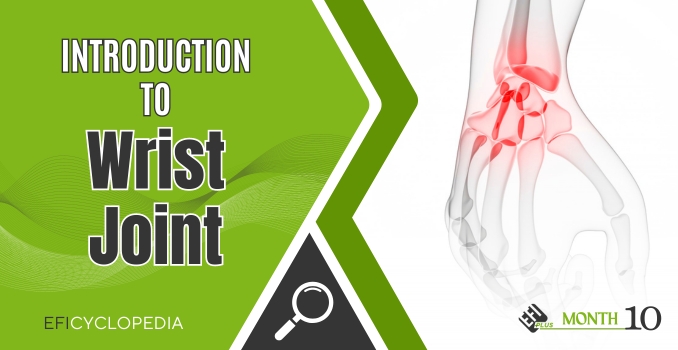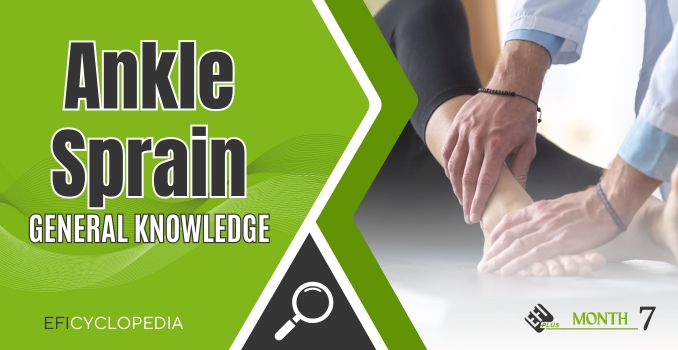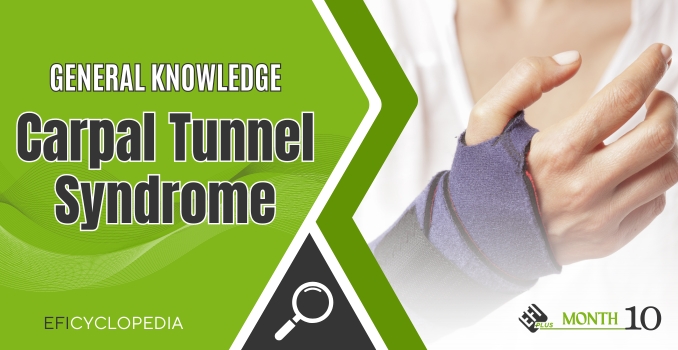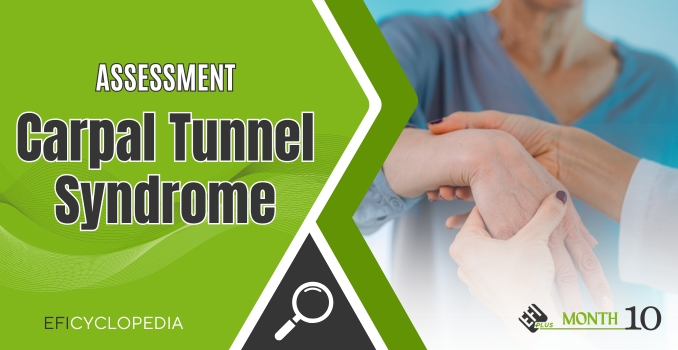Month 10
Wrist
Does carpal tunnel pain slow you down? Find relief here!
Gear up for the tenth month of the EFIcyclopedia as we'll focus on carpal tunnel syndrome. Feeling pain in your wrist? Carpal tunnel syndrome might be the culprit. This condition arises from increased pressure within the carpal tunnel, squeezing the median nerve that runs through your wrist. We'll explore the causes of carpal tunnel syndrome, its symptoms, and effective treatment options to help you manage the pain and regain wrist mobility.
Gain valuable knowledge about the anatomical structures affected by carpal tunnel syndrome. This knowledge is key to effective pain management and regaining full use of your hand.
WHAT YOU NEED TO KNOW: To deepen your understanding of carpal tunnel syndrome, we will dissect the wrist's anatomy and expose its root causes, empowering you to find lasting solutions.
- Exploring Wrist Anatomy: An informative exploration of its muscles and joints, mechanics, and significance for overall well-being.
Unraveling the root causes: Discover the different factors contributing to carpal tunnel syndrome, from repetitive movements to external forces that narrow the carpal tunnel.
Signs and Symptoms: Learn the telltale signs of carpal tunnel syndrome to get the right treatment fast.
HOW: This section discusses different assessment methods, including scans and physical exams, for diagnosing carpal tunnel syndrome.
WHAT TO DO: By taking preventative measures, you can significantly reduce the impact of wrist problems and maintain a life of optimal mobility and comfort.
- Tailored Wrist Pain Solutions: To keep pain at bay, engage in these dynamic exercises designed to improve your wrist's strength, flexibility, and stability.
Prevention and Management: Explore effective strategies for preventing carpal tunnel syndrome, including activity modifications and self-care tricks.
WHY THIS MATTERS: By learning about your body, you'll be better equipped to make informed choices that promote well-being.
- Improved Well-Being: Persistent wrist pain can disrupt daily activities and impact your overall quality of life. Understanding the source of the problem empowers you to find long-term solutions.
Informed Decision-Making: Understanding how your wrist works and how carpal tunnel syndrome happens puts you in control. Become an informed decision-maker in your treatment plan to heal quickly and avoid future injuries.
Elevate your wellness journey! This month, EFIcyclopedia offers a unique discussion of carpal tunnel syndrome. Join us and find out how to achieve pain-free, active, and thriving well-being. Take a wellness journey with us—we'll be your guide to a healthier you!

Introduction to Wrist Joint
The human hand boasts a sophisticated system that enables it to carry out many functional tasks essential for daily life. Central to this functionality is the wrist joint, which serves as a pivotal connection between the hand and forearm. This joint is highly intricate, comprising numerous bones, ligaments, tendons, and muscles.

Ankle - General Knowledge
The ankle joint is as vital and versatile as the other structures in human anatomy. Delving into its anatomical complexities, physiological roles, and clinical ramifications is a journey that warrants in-depth exploration. Thoroughly scrutinizing the basic principles and latest developments and comprehending every aspect of this extraordinary joint's anatomy, biomechanics, and functionality enables healthcare providers to accurately evaluate patients and create customized treatment strategies aligned with their unique needs and objectives.

General Knowledge: Carpal Tunnel Syndrome
Carpal tunnel syndrome (CTS) is a common condition that can cause pain, numbness, and tingling sensation in the hand and wrist. It occurs when one of the major nerves in the hand called the median nerve, which runs through a narrow in your wrist called carpal tunnel, becomes squeezed or compressed. This disrupts the nerve’s signals leading to the symptoms of carpal tunnel syndrome.

Assessment: Carpal Tunnel Syndrome
Carpal Tunnel Syndrome (CTS) is a prevalent condition characterized by compression of the median nerve at the wrist, leading to various symptoms and impairments. Effective assessment is crucial in diagnosing CTS accurately and guiding appropriate management strategies.

Treatment & Management: Carpal Tunnel Syndrome
Using a splint to keep your wrist immobile during sleep can alleviate nighttime tingling and numbness. Although you wear the splint only at night, it can prevent daytime symptoms. Nighttime splinting could be a suitable choice for pregnant individuals as it doesn't require medication to be effective.
